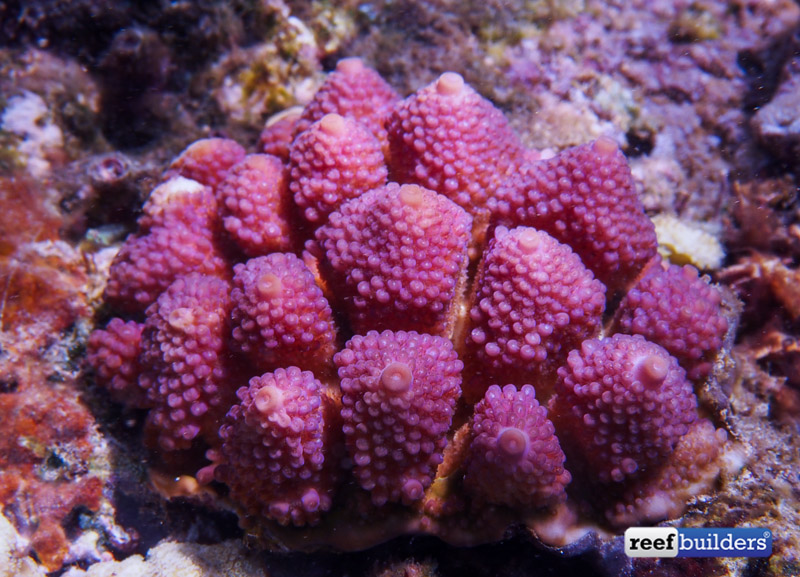We have held a soft spot for Acropora globiceps ever since the beginning of our adventures in reef and stony coral keeping. Acropora globiceps was one of the first acro frags that we ever got and grew, yet this species is somehow rare to nonexistent in the marine aquarium hobby for unknown reasons.
Besides the funny name of this species, what makes it stand out is its distinct growth form, which somewhat resembles little living crystals growing together in a cluster, especially in shallow water. Not unlike Acropora monticulosa, A. globiceps is most often found in shallow, wave-washed parts of reef slopes and the more wave action it is exposed to, the more tightly its branches will grow.
In the most extreme expression of this clustered growth form, the axial corallites of Acropora globiceps appear so densely packed as to become indistinct, making this coral look like a thick branching Pocillopora verrucosa. Additionally, you are likely to find the globiceps acro in shades of light blue or purple and pink, further compounding the potential confusion with the thick knobby branches of shallow water Pocillopora.
One of the other neat features of Acropora globiceps is that it doesn’t grow very large; colonies rarely reach more than six inches across but you may find several colonies three to five inches across growing in the same area of the reef, like a little colony of stony coral colonies. On a recent coral scouting trip to the northern part of the Coral Triangle, in the Philippines, we were fortunate enough to observe an abundance of this species all over the shallow water reefs.
Not every colony of Acropora globiceps is a winner; some of them have cool shape, some of them have cool color. But the very neatest ones are both bright in color, with very fat, stout branches, at which point each of its branches truly do look like living crystals, huddled together for warmth or comfort.
However unlike the huge sprawling, massive and extremely thick branches of Acropora monticulosa, Globiceps Acro does make a great aquarium coral. You’ll still need pretty strong flow and high light to encourage the neat crystalline growing shape and the brightest colors but it can reward its keeper with a coral that is truly unique. Now the problem is figuring where to actually get some.




